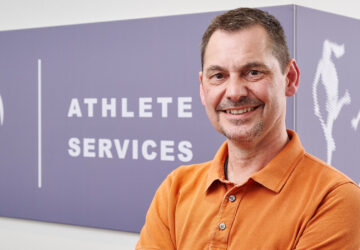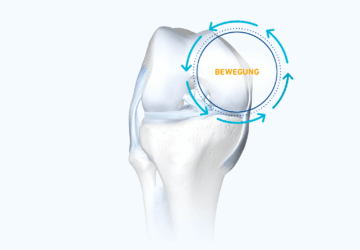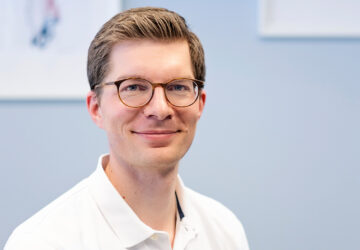In short Most patients with osteoarthritis now visit their doctor earlier with complaints and are open to joint-preserving measures, notices Dr. Martin Heß. However, they absolutely need some guidance on orthopedic aids, as they usually have little prior knowledge. In individualized pain therapy, he combines positive experiences with the support GenuTrain A3 and the braces GenuTrain OA and SecuTec OA. Compression can help with acute symptoms, while mechanical offloading is useful in cases of axis misalignments and longer-lasting pain. What matters most, he emphasizes, is always what the patients personally want to achieve during treatment. “That’s what I’ll base my decision on about how beneficial a measure will be,” says the orthopedist.
Supports·Orthosis·Arthrosis·Knee pain·Gonarthrosis
“There’s a general need for information”
Treating osteoarthritis of the knee using braces
From Bauerfeind Life on 02.10.2025
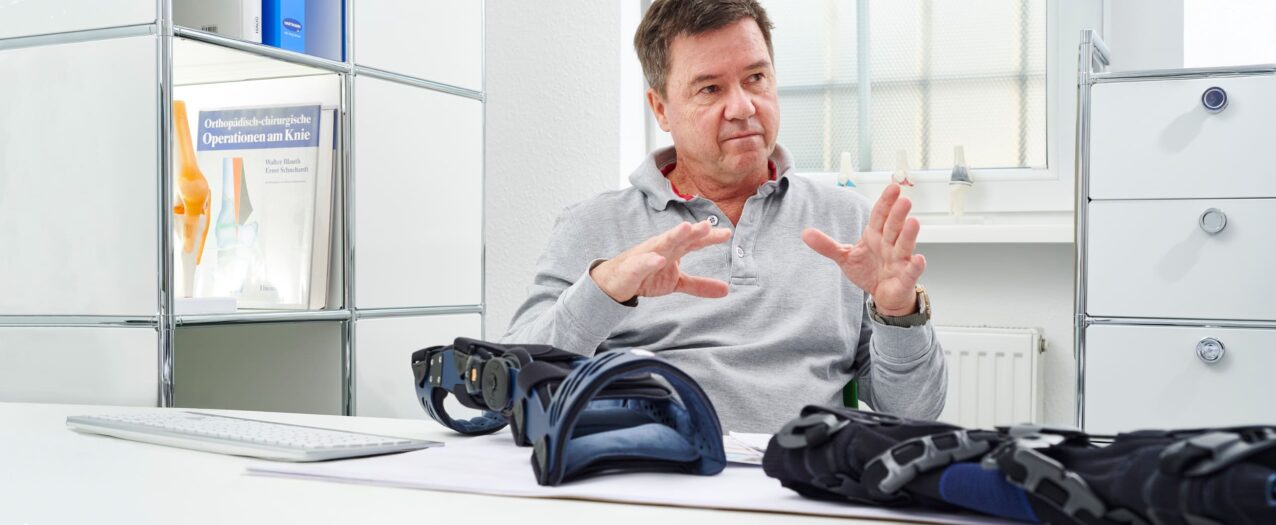
Dr. Martin Heß diagnoses osteoarthritis of the knee increasingly often at his practice in Saarbrücken-Dudweiler in Germany, estimating “around 20% of my patients are now visiting me because of knee pain that can clearly be attributed to cartilage wear.” These are patients who still want to enjoy active leisure time but tend to be critical about surgery. According to his experience, they respond very positively to modern orthotic products.
“It’s not so much the increased life expectancy that makes osteoarthritis of the knee an ongoing subject in office-based practices but the higher expectations concerning quality of life,” Dr. Martin Heß explains. In addition to their professional lives, patients want to be active on vacation and when they’re retired. That’s why they’re consulting physicians earlier to discuss their symptoms. “The severity of their osteoarthritis ranges from mild to advanced, and their physical condition differs as much as their personal goals, which is something we have to take into account during treatment,” the orthopedist elaborates. He notices that most patients prefer not to get an artificial knee joint for as long as possible, supporting joint-preserving treatment with all its options, which also includes orthopedic aids.
What do patients want to achieve?
In addition to a thorough physical examination and the use of imaging technology, such as X-rays and MRI, Dr. Heß primarily includes the personal discussion with the patient in his treatment decisions. He not only asks about possible triggers, symptoms, and how the condition is progressing, but he also tries to find out the following: what does quality of life mean to the person sitting opposite him? What restrictions can they live with and what do they want to achieve during treatment? “Generally, not suffering from pain is the top priority, or mobility. But what does that mean exactly in each case? Does it mean returning to work or being able to continue working? Does it mean pursuing sports, whether during leisure time or at an elite level? Or does it mean maintaining independence, being able to go shopping or having a social life, meeting people, going to family reunions,” the orthopedist asks. “That’s what I’ll base my decision on about how useful and beneficial a measure will be.”
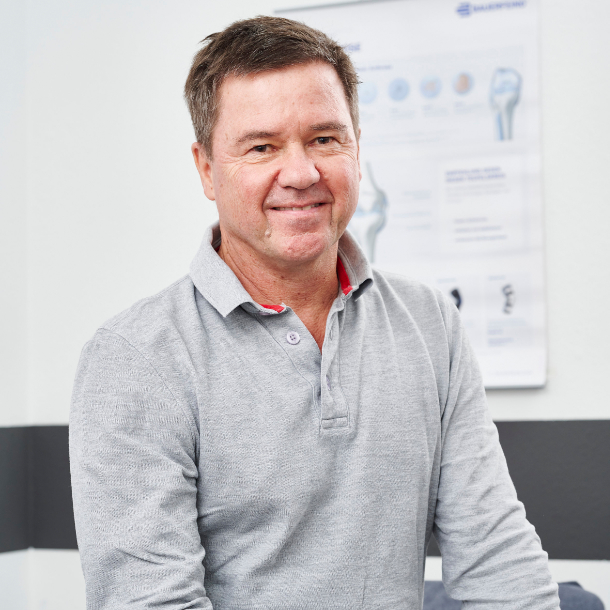
Acute compression, long-term relief as pain therapy
If indications that make surgery mandatory are excluded and the physician as well as the patient want to pursue conservative methods, the level of pain will be the first factor that determines what measures can be considered. “In cases of acute pain coupled with arthritis, I puncture a swollen knee and prescribe anti-inflammatory medication. In addition, I will implement compression using a support to alleviate pain,” Dr. Heß says, adding “in particular if the pad has a targeted effect on the Hoffa’s fat pad which is very sensitive to pain in cases of inflammation. This is one of the benefits of the GenuTrain A3 for example. I’ve had good experiences with it during acute treatment.” In addition, the orthopedist will look at the muscles and the pattern of strain, on which he bases physiotherapy, and checks whether the leg axis can be positively influenced with foot orthoses to relieve the knee sufficiently. For the longer term, if someone is feeling ongoing pain at rest and during exertion, especially when starting an activity after resting, Dr. Heß will prescribe braces to provide the knee with targeted mechanical relief. Furthermore, he will give hyaluronic acid injections into the joint as an individual healthcare service.
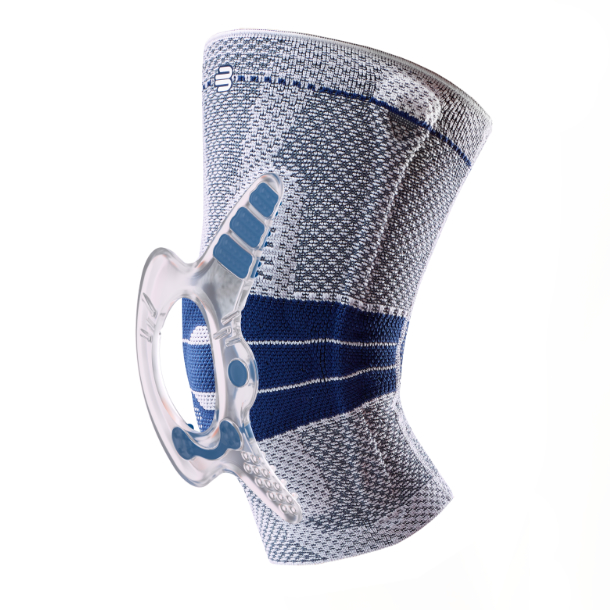
More information.
Exercise and work as risk factors
After many years in various roles at Saarlouis Orthopedic Hospital, Dr. Heß has had his own practice in Saarbrücken-Dudweiler since 2002. Born in Saarland, he has known some of his patients suffering from osteoarthritis of the knee for a long time, for example, from his time as team physician for the German Football Association and for 1. FC Saarbrücken. “Prevention is part of the medical support in performance sports, but the risk is still very high in a contact sport like this one,” says the orthopedist and trauma surgeon. The frequency and severity of the condition have recently caused employers’ liability insurance associations and accident insurers to recognize osteoarthritis of the knee as an occupational condition for professional football players, in addition to meniscus damage. This is based on constant excessive strain and knee injuries even at a young age which can advance the development of osteoarthritis. In addition to former performance athletes, many ambitious amateur athletes and employees from heavy industry are Dr. Heß’ patients because mining was important in Saarland until about 15 years ago and tough physical labor has resulted in cartilage damage.
“If patients have a shifted axis, they need targeted relief in the long term.”
Dr. Martin Heß
GenuTrain OA provides individual support
“If patients have a shifted axis, they need targeted relief in the medial or lateral compartment in the long term so they can be active again without feeling much pain,” Dr. Heß explains. Active patients who want to continue with their sports or need to move a lot at work or during their spare time usually tolerate soft braces better and wouldn’t require a hard-frame brace if their fitness level is good, in his opinion. When supporting treatment, he has had very good experiences with the GenuTrain OA “because patients can adjust the relieving effect themselves.” He reports that most patients would just don the brace and get on well with it straight away. This is key for compliance because the positive effects on joint function and mobility only become obvious after a few weeks of wearing the product regularly, resulting in “active confidence during everyday activities”. The physician must point this out when issuing the prescription because it may be the first experience with a brace for many. “Not enough people know that braces exist, and which opportunities are offered by modern solutions. There’s a general need for information here,” Dr. Heß highlights. “That starts with the mode of action, includes adjustments options, and ends with everyday handling, such as: when do I wear the brace and when do I take it off?”
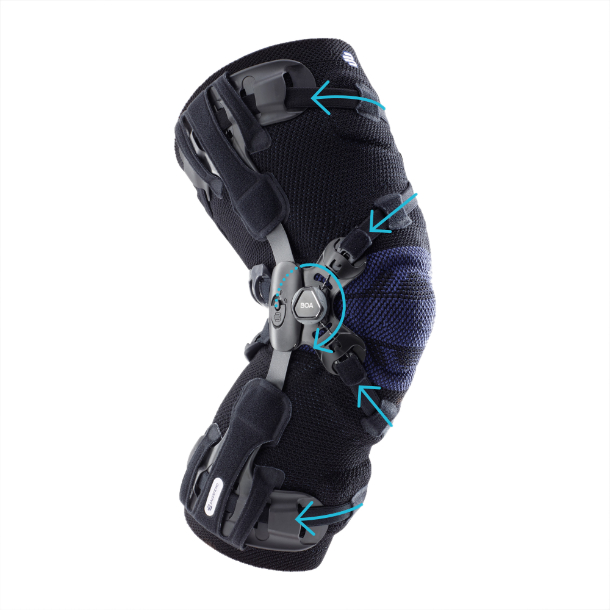
A study from KIT demonstrates positive effects in patients with osteoarthritis of the knee. More information.
SecuTec OA relieves and stabilizes
The orthopedist believes that cases of pronounced axis misalignments and an increased need for stabilization are the limit for flexible soft braces. “If the joint is already severely damaged, and there are additional muscular deficits, a hard-frame brace is needed to exert required relief and axis stability,” he explains. A brace like the SecuTec OA could then provide older patients in particular with additional confidence during everyday activities.
The SecuTec OA provides relief in accordance with the 3-point principle as pressure is gently applied via the lower leg, and it stabilizes in accordance with the 4-point principle. It therefore counteracts both anterior and posterior instability and can provide protective limitation during flexion and extension.
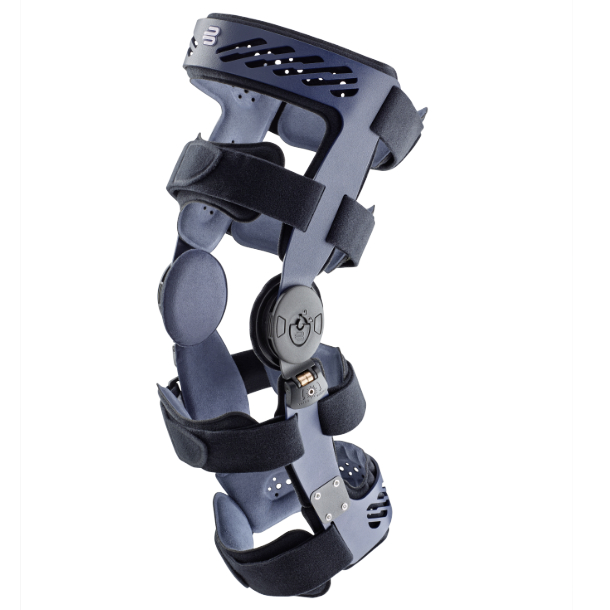
An alternative to surgery in cases of good compliance
Furthermore, the specialist regards the SecuTec OA as an alternative to joint replacement surgery or an option to bridge the time until surgery takes place. Practically every case of osteoarthritis of the knee is suitable for surgery. “But the overall physical condition also counts before a procedure,” he elaborates. From taking blood thinners to diabetes, many health factors contraindicate surgery, allowing options in orthotics to come into play – provided that they meet the patients’ personal goals and they are convinced by the measure. “It’s crucial that patients wear the brace regularly,” Dr. Heß points out. That is why he asks patients to bring their product to the follow-up appointment and watches them don it so he can see how experienced they are with its handling. “The patients’ active involvement is essential for treatment success.”
For further information and expert articles on Bauerfeind’s osteoarthritis treatment solutions, please check indications and therapies.
Pictures: Udo Schönewald, Bauerfeind AG
Related topics
Product-Finder App

This app greatly simplifies the selection of suitable medical aids for doctors and specialist dealers. With its intuitive usability, information on Bauerfeind products is available everywhere – quickly and easily
